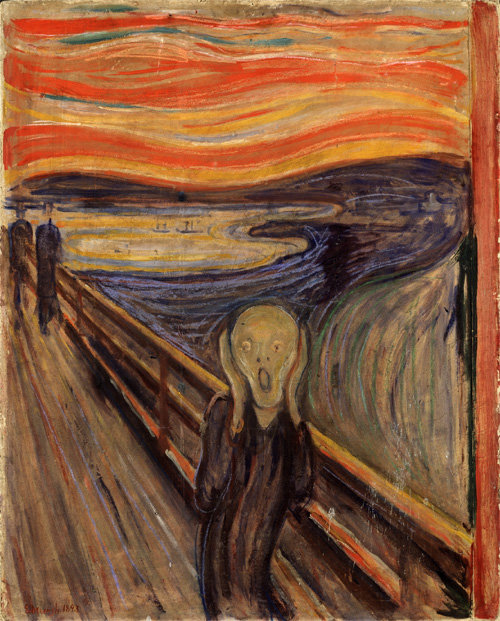Icon of scream
Icon of scream
Posted September. 26, 2019 07:27,
Updated September. 26, 2019 07:27

The image of a person with a head resembling a bare skull screaming with his hands covering his ears against a red sunset. This short description alone will immediately bring up a painting in many readers’ minds – “The Scream” by Edvard Munch. The piece has become an icon of scream after countless parodies and copies made in ads, movies, TV shows, and modern art. Why is the painting of the Norwegian Expressionist artist so widely loved by many generations across borders?
Death, disease, anxiety, and fear – Munch was very much used to these words from early ages. His mother and older sister each passed away when he was five and 13, respectively. His father was very strict and his sister and he himself suffered mental diseases. Ironically, such misfortune from childhood became the theme and driver for his art. To the artist who suffered in loneliness his whole life, art was a desperate effort to shake off anxiety and a sole remedy.
The Norwegian artist painted from his memory of what he saw, rather than directly observing objects. “The Scream” was a manifestation of his memory about a particular evening sunset that he saw while walking a hill in Ekeberg, Oslo.
“I was out for a walk with two friends of mine at sunset. Then, suddenly the setting sunlight turned the clouds a blood red. I sensed an infinite scream passing through nature,” he wrote in his journal. This indicates that the man in the painting is the artist himself. Munch wasted to express loneliness, fear, pain, and tragedy felt by humans at the turn of a century through simple shapes, bold colors, and twisted and exaggerated landscape and person represent. Unfortunately, only a few understood this artwork then and even critics condemned it as “insult to paintings.” Munch’s reputation as the founder of the expressionism came in much later.
People scream when they are in extreme shock, pain, anger or fear. No other artist other than Munch has depicted these extreme emotions that all of us are bound to feel from time to time in such a perfect way. The painting’s continued popularity must be because pain, anger, fear, and madness experienced by modern people are as intense as, if not more, they were 100 years ago when Munch was alive.







